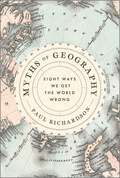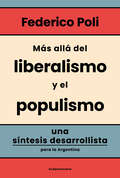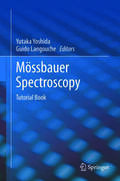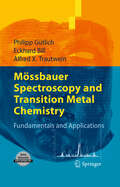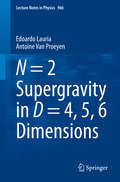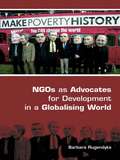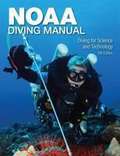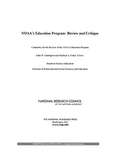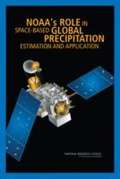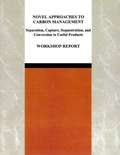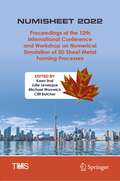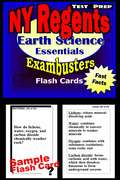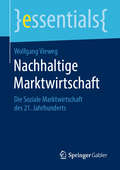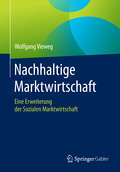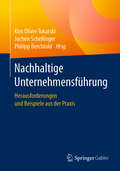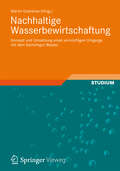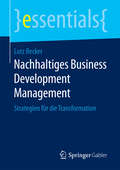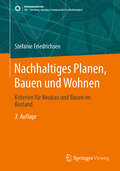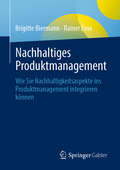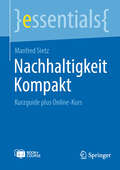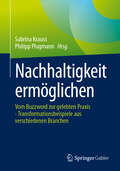- Table View
- List View
Myths of Geography: Eight Ways We Get the World Wrong
by Paul RichardsonIs geography really destiny? Our maps may no longer be stalked by dragons and monsters, but our perceptions of the world are still shaped by geographic myths. Myths like Europe being the center of the world. Or that border walls are the solution to migration. Or that Russia is predestined to threaten its neighbors. In his punchy and authoritative new book, Paul Richardson challenges recent popular accounts of geographical determinism and shows that how the world is represented often isn't how it really is—that the map is not the territory. Along the way we visit some remarkable places: Iceland's Thingvellir National Park, where you can swim between two continents, and Bir Tawil in North Africa, one of the world's only territories not claimed by any country. We follow the first train that ran across Eurasia between Yiwu in east China and Barking in east London, and scale the US-Mexico border wall to find out why such fortifications don&’t work. Written with verve and full of quotable facts, Myths of Geography is a book that will turn your world upside down.
Más allá del liberalismo y el populismo: Una síntesis desarrollista para la Argentina
by Federico PoliPasado, presente y futuro de la Argentina desde una perspectiva de síntesis desarrollista, que propone dejar atrás las posiciones populistas y liberales-ortodoxas que han sido dos caras de la misma moneda de fracaso y frustración, y recuperar el camino al bienestar. El balance de las últimas tres décadas de política económica argentina que Federico Poli presenta en este libro se beneficia de su dilatada trayectoria profesional en nuestro país y en organismos internacionales y de sus intervenciones en la esfera pública con las que, en la forma de artículos periodísticos, fue dando testimonio durante esos años. Todo lo que aquí hay de diagnóstico es insumo de una potente plataforma de lanzamiento de propuestas para nuestros presente y futuro. En el mismo gesto en que Poli impugna a populistas obsesionados por la redistribución de lo inexistente y a liberales fijados en la estrechez de lo monetario por haber contribuido a la destrucción del proceso inversor, señala el peor olvido de la dirigencia argentina: la generación de riqueza, núcleo del fracaso colectivo de último medio siglo. Agotadas las dos caras de una misma y ruinosa moneda, en estas páginas se demuestra que los activos productivos de lo que supimos hacer todavía están ahí; en eso, y en su formulación de una síntesis desarrollista que devuelva bienestar a la Argentina, se cifra la visión esperanzada que propone y a la que convoca.
Mössbauer Spectroscopy
by Guido Langouche Yutaka YoshidaTutorials on Mössbauer Spectroscopy Since the discovery of the Mössbauer Effect many excellent books have been published for researchers and for doctoral and master level students. However, there appears to be no textbook available for final year bachelor students, nor for people working in industry who have received only basic courses in classical mechanics, electromagnetism, quantum mechanics, chemistry and materials science. The challenge of this book is to give an introduction to Mössbauer Spectroscopy for this level. The ultimate goal of this book is to give this audience not only a scientific introduction to the technique, but also to demonstrate in an attractive way the power of Mössbauer Spectroscopy in many fields of science, in order to create interest among the readers in joining the community of Mössbauer spectroscopists. This is particularly important at times where in many Mössbauer laboratories succession is at stake. This book will be used as a textbook for the tutorial sessions, organized at the occasion of the 2011 International Conference on the Application of Mössbauer Spectroscopy (ICAME2011) in Tokyo.
Mössbauer Spectroscopy and Transition Metal Chemistry
by Eckhard Bill Philipp Gütlich Alfred X. Trautweinconcentrates on teaching techniques using as much theory as needed.application of the techniques to many problems of materials characterization.Mössbauer spectroscopy is a profound analytical method which has nevertheless continued to develop. The authors now present a state-of-the art book which consists of two parts. The first part details the fundamentals of Mössbauer spectroscopy and is based on a book published in 1978 in the Springer series 'Inorganic Chemistry Concepts' by P. Gütlich, R. Link and A.X. Trautwein. The second part covers useful practical aspects of measurements, and the application of the techniques to many problems of materials characterization. The update includes the use of synchroton radiation and many instructive and illustrative examples in fields such as solid state chemistry, biology and physics, materials and the geosciences, as well as industrial applications. Special chapters on magnetic relaxation phenomena (S. Morup) and computation of hyperfine interaction parameters (F. Neese) are also included. The book concentrates on teaching the technique using theory as much as needed and as little as possible. The reader will learn the fundamentals of the technique and how to apply it to many problems of materials characterization. Transition metal chemistry, studied on the basis of the most widely used Mössbauer isotopes, will be in the foreground.
Mülleimer Strand
by Michael StachowitschDieses reich illustrierte Buch ist der ideale Führer zu den Gegenständen, die an den Stränden der Welt herumliegen. Vergessen Sie Muscheln und andere Fauna und Flora. Hier finden Sie, was ein Strandbesucher heutzutage am ehesten antreffen kann: Glas, Plastik, Holz, Metall, Papier, Öl und andere Quellen der Meeresverschmutzung!Mit fast 700 Fotos zeigt dieser Leitfaden die ganze Bandbreite der Müllgegenstände im Meer, die jeweils mit einem Augenzwinkern und einer Prise Humor vorgestellt werden. Darüber hinaus liefert der Autor ausführliche Informationen zu diesen Gegenständen. Sie werden alles Wissenswerte über sie erfahren. Dazu gehören nicht nur ihre Herkunft und ihre Zersetzungsstadien. Sie erfahren, welche Bedrohung die einzelnen Gegenstände für diese wunderschöne Umwelt darstellen, und erhalten Informationen über Präventionsstrategien, Empfehlungen für die Reinigung, alternative Produkte sowie Recycling- und Upcycling-Ideen. Neben dem ästhetischen Aspekt stellt der Müll im Meer auch eine Bedrohung für die Tierwelt, die menschliche Gesundheit und das wirtschaftliche Wohlergehen dar. Dieses Buch gibt Ihnen das nötige Wissen an die Hand, um diese schändlichen und oft gefährlichen Schandflecke zu bekämpfen. Werden Sie ein Stranddetektiv! Bereisen Sie mit dieser ultimativen Strandlektüre die beliebtesten Reiseziele der Welt und helfen Sie mit, diese faszinierenden Umgebungen in ihrer natürlichen Schönheit wiederherzustellen.
N = 2 Supergravity in D = 4, 5, 6 Dimensions (Lecture Notes in Physics #966)
by Edoardo Lauria Antoine Van ProeyenThis graduate-level primer presents a tutorial introduction to and overview of N = 2 supergravity theories - with 8 real supercharges and in 4, 5 and 6 dimensions. First, the construction of such theories by superconformal methods is explained in detail, and relevant special geometries are obtained and characterized. Following, the relation between the supergravity theories in the various dimensions is discussed. This leads eventually to the concept of very special geometry and quaternionic-Kähler manifolds.This concise text is a valuable resource for graduate students and young researchers wishing to enter the field quickly and efficiently.
NGO Management: The Earthscan Companion (Earthscan Reader Ser.)
by Alan Fowler; Chiku MalungaThe task environment of NGOs is changing rapidly and significantly, making new demands on their management and leadership. This Companion discusses the complexities involved. It illustrates how NGOs can maintain performance and remain agile amidst increasing uncertainties. These factors include the position of NGOs in civil society, their involvement in governance and coping with the effects of the securitisation of international aid. Complementing The Earthscan Reader in NGO Management, selected contributions and specially commissioned pieces from NGO thought-leaders and practitioners, provide the reader with insights on the emerging thinking, competences and practices needed for success in managing and leading tomorrow's NGOs.
NGOs as Advocates for Development in a Globalising World
by Barbara RugendykeThis book traces the recent growth in NGO advocacy. Barbara Rugendyke presents empirical findings about the impacts of NGO advocacy activity on the policies and practices of global and regional institutions. The research reveals the mixed successes of advocacy as a strategy for addressing the ongoing causes of poverty in developing nations. Case studies illustrate the advocacy work of Australian NGOs, of British NGOs policies about engaging with multinationals, of Oxfam International’s advocacy directed at World Bank policies and NGO advocacy in the Mekong Region. Adopting an interdisciplinary approach, the mixed successes of advocacy as a strategy used by NGOs in attempting to address the ongoing causes of poverty in developing nations are examined. This volume is a useful aid to researchers, students and lecturers and to development practitioners interested in advocacy as a development strategy.
NOAA Diving Manual: Diving for Science and Technology
by Noaa Diving ProgramThis sixth edition of the NOAA Diving Manual builds on earlier editions, combining new developments in equipment and cutting-edge methods and procedures to provide a reference text that is useful for not only scientists but also all divers. New Chapters include: advanced platform support diving with ROVs/AUVs, submersibles, and atmospheric diving systems as well as underwatepPhotography and videography. Significantly revised and updated chapters include diving equipment; procedures for scientific dives, rebreathers, and polluted water diving. This edition also includes the new NOAA nitrox tables.
NOAA's Education Program: Review and Critique
by National Research Council of the National AcademiesThere is a national need to educate the public about the ocean, coastal resources, atmosphere and climate. The National Oceanic and Atmospheric Administration (NOAA), the agency responsible for understanding and predicting changes in the Earth's environment and conserving and managing coastal and marine resources to meet the nation's economic, social and environmental needs, has a broad mandate to engage and coordinate education initiatives on these topics. Since its creation in 1970, the NOAA has supported a variety of education projects that cover a range of topics related to the agency's scientific and stewardship mission. NOAA uses formal and informal learning environments to enhance understanding of science, technology, engineering and mathematics (STEM) and to advance environmental education. The work of this agency overlaps and compliments the missions of other federal agencies, institutions of higher education, private and nonprofit organizations. Coordination among these agencies and organizations has been challenging. Limited education resources and the inherently global nature of NOAA's mission make strategic partnerships critical in order for the agency to accomplish its goals. Additionally, clear education goals, planning, and strategic use of resources are critical aspects for effective partnerships. NOAA's Education Program: Review and Critique provides a summary of the national education context for NOAA's role in education which is twofold: first is to advance the environmental literacy of the nation, and second is to promote a diverse workforce in ocean, coastal, Great Lakes, atmospheric and climate sciences. The book also describes the strengths and weaknesses of the education strategic plan, the education evaluation approach of the agency and strategies for improving the evaluation process.
NOAA's ROLE IN SPACE-BASED GLOBAL PRECIPITATION ESTIMATION AND APPLICATION
by National Research Council of the National AcademiesThe National Oceanic and Atmospheric Administration (NOAA) uses precipitation data in many applications including hurricane forecasting. Currently, NOAA uses data collected from the Tropical Rainfall Measuring Mission (TRMM) satellite that was launched in 1997 by NASA in cooperation with the Japan Aerospace Exploration Agency. NASA is now making plans to launch the Global Precipitation Measurement (GPM) mission in 2013 to succeed TRMM, which was originally intended as a 3 to 5 year mission but has enough fuel to orbit until 2012. The GPM mission consists of a "core" research satellite flying with other "constellation" satellites to provide global precipitation data products at three-hour intervals. This book is the second in a 2-part series from the National Research Council on the future of rainfall measuring missions. The book recommends that NOAA begin its GPM mission preparations as soon as possible and that NOAA develop a strategic plan for the mission using TRMM experience as a guide. The first book in the series, Assessment of the Benefits of Extending the Tropical Rainfall Measuring Mission (December 2004), recommended that the TRMM mission be extended as long as possible because of the quality, uniqueness, and many uses of its data. NASA has officially extended the TRMM mission until 2009.
NOVEL APPROACHES TO CARBON MANAGEMENT: Separation, Capture, Sequestration, and Conversion to Useful Products
by Committee on Novel Approaches to the Management of Greenhouse Gases from Energy SystemsA report on Novel Approaches to Carbon Management
NUMISHEET 2022: Proceedings of the 12th International Conference and Workshop on Numerical Simulation of 3D Sheet Metal Forming Processes (The Minerals, Metals & Materials Series)
by Cliff Butcher Kaan Inal Julie Levesque Michael WorswickThe NUMISHEET conference series is the most significant international conference on the area of the numerical simulation of sheet metal forming processes. It gathers the most prominent experts in numerical methods in sheet forming processes and is an outstanding forum for the exchange of ideas and for the discussion of technologies related to sheet metal forming processes. Topics covered in this volume include but are not limited to the following: Materials Modeling and Experimental Testing MethodsFriction and ContactFormability, Necking, and FractureInstabilities and Surface DefectsFracture and DamageNumerical MethodsSpringbackIncremental Sheet FormingRoll FormingInnovative Forming MethodsProduct and Process Design and Optimization
NY Regents Test Prep Flash Cards: Earth Science Essentials (Exambusters NY Regents Workbook #1)
by Ace Inc.<P><P><i>Advisory: Bookshare has learned that this book offers only partial accessibility. We have kept it in the collection because it is useful for some of our members. Benetech is actively working on projects to improve accessibility issues such as these.</i><P><P> 600 questions and answers. Essential definitions and concepts. <P><P>Topics: Calculations, Earth's Origin, Save Our Planet, Minerals, Rocks, Weathering, Groundwater, Running Water, Glaciers, The Changing Crust, The Oceans, Maps, The Atmosphere, Wind, Weather Patterns, Introduction to Astronomy <P>"Exambusters NY Regents Prep Workbooks" provide comprehensive NY Regents review--one fact at a time--to prepare students to take practice NY Regents tests. Each NY Regents study guide focuses on fundamental concepts and definitions--a basic overview to begin studying for the NY Regents exam. Up to 600 questions and answers, each volume in the NY Regents series is a quick and easy, focused read. Reviewing NY Regents flash cards is the first step toward more confident NY Regents preparation and ultimately, higher NY Regents exam scores!
Nachhaltig gründen: Ein Praxisleitfaden für verantwortungsvolle Unternehmensgründungen
by Sascha GendersWenn Sie heute ein Unternehmen gründen, sollten Sie nachhaltiges Denken und Handeln von Beginn an in Ihre Planung und in den Aufbau des Unternehmens integrieren. Der kompakte und praxisorientierte Leitfaden gibt Ihnen zunächst eine Einführung in das Themenfeld Nachhaltigkeit und Unternehmensverantwortung. Kernstück des Fachbuches sind anschließend konkrete Hilfestellungen für die Planung Ihrer Existenzgründung und die Erarbeitung Ihres Businessplans – mit Berücksichtigung von Aspekten der Nachhaltigkeit in Ihrem Geschäftskonzept. Für Praxisnähe sorgen eine Vielzahl konkreter Tipps und Reflexionsfragen, die Sie bei der eigenen Standortbestimmung und Erstellung des Businessplans unterstützen. Das Buch richtet sich an Gründungswillige, Start-ups- und Interessierte zum Thema Nachhaltigkeit. Der Inhalt Nachhaltigkeit: Grundlagen, Konzepte und Bedeutung Nachhaltigkeit und Unternehmensgründungen Praxisleitfaden für einen (nachhaltigen) Businessplan Gründerperson, Geschäftsmodell, Produkt & Dienstleistung, Organisation, Recht, Wirtschaftlichkeit und Finanzierung
Nachhaltige Marktwirtschaft: Die Soziale Marktwirtschaft des 21. Jahrhunderts (essentials)
by Wolfgang ViewegWolfgang Vieweg zeigt kompakt und allgemein verständlich, inwiefern die Soziale Marktwirtschaft für die heutige Zeit zu eng geworden ist und weshalb sie unbedingt einer Erweiterung bedarf. In Sachen Nachhaltigkeit hat Deutschland inzwischen eine umfängliche und leistungsfähige Infrastruktur aufgebaut. Nachhaltigkeit ist Chefsache in der Politik, hat einen hohen Stellenwert in den Unternehmen und Menschen ändern ihr Konsumverhalten. Der Autor zeigt, wie die aktuelle Weiterentwicklung von Konzepten und Begrifflichkeiten schließlich in ein neues Bewusstsein mündet und somit die globale Transformation zu einer nachhaltigen Welt befördert.
Nachhaltige Marktwirtschaft: Eine Erweiterung der Sozialen Marktwirtschaft
by Wolfgang ViewegIn diesem Buch wird die Notwendigkeit einer programmatischen und terminologischen Weiterentwicklung der Sozialen zu einer Nachhaltigen Marktwirtschaft aufgezeigt. Es legt informativ dar, wie der aktuelle Stand bei der fortschreitenden Implementierung und Etablierung ist und welche Probleme entstehen können, wenn der Begriff „Nachhaltigkeit“ unterschiedlich interpretiert wird. Auch die Vorteile, die eine Nachhaltige Marktwirtschaft langfristig mit sich bringt, rücken ins Blickfeld. Dabei betrachtet der Autor zunächst Deutschland, aber notwendigerweise auch die globale Ebene: Umwelt- und Klimaschutz sind kein ausschließlich nationales Thema. Das deutsche Wirtschafts- und Gesellschaftsmodell der Sozialen Marktwirtschaft hat sich in den vergangenen 60 Jahren bestens bewährt – aber im Laufe der Jahrzehnte ist sie allmählich zu eng geworden und braucht nun unbedingt eine Erweiterung.
Nachhaltige Unternehmensführung
by Kim Oliver Tokarski Jochen Schellinger Philipp BerchtoldDieser Herausgeberband setzt sich empirisch und theoretisch mit verschiedenen Aspekten einer nachhaltigen Unternehmensführung auseinander. Fortwährendes weltweites Bevölkerungswachstum und zunehmender Konsum zusammen mit wachsender Globalisierung führen dazu, dass die in unserer Umwelt vorhandenen natürlichen Ressourcen ohne gegensteuernde Maßnahmen irgendwann erschöpft sein werden. In dieser Situation wird eine strategische Führung von Unternehmen und Organisationen immer wichtiger, die ausgehend von den drei Nachhaltigkeitsperspektiven „Ökonomie“, „Ökologie“ und „Soziales“ alle relevanten Stakeholder einbezieht. Ziel sollte eine generationenübergreifende Entwicklung sein, in der die Bedürfnisse der gegenwärtigen Generation befriedigt werden, ohne dass dies auf Kosten zukünftiger Generationen geschieht. Auf dieser Grundlage greifen die Autoren aktuelle, praxisrelevante Fragestellungen auf, schildern konkrete Fallbeispiele und geben Handlungsempfehlungen. Die Bandbreite reicht von einer grundlegenden Diskussion ethischer Prinzipien internationaler Unternehmen über wertorientierte Steuerungskennzahlen und eine nachhaltige Beschaffung in der Lebensmittelbranche bis hin zur Logistikgestaltung in Smart Cities.
Nachhaltige Wasserbewirtschaftung
by Martin Wahl Michael Becker Martin Grambow Jacobus Hofstede Alois Heissenhuber Andreas Goetz Anton Steiner Bernd Scherer Christiane Groß Christine Krämer Christine Wenzel Claus Kumutat Dietmar Wienholdt Erich Eichenseer Erich Englmann Gabriele Merz Gregor Overhoff Hans Huber Holger Magel Ingo Reimann Jakob Opperer Karl Schneider Katrin Horn Maria Patek Martin Faulstich Martin Steger Michael Haug Peter Rutschmann Peter Wilderer Raoul Weiler Reinhard F. Schmidtke Rolf Manser Stephan Von Keitz Theo Schlaffer Ulrich Drost Walter Binder Werner Reifenhäuser Werner Wahliß Wolfgang Günthert Wolfram MauserDer Wassersektor gehört zu den ganz großen aktuellen globalen Herausforderungen. Wasserbewirtschaftung verlangt ein vertieftes Verständnis der Nachhaltigkeit. Das Buch erläutert vor diesem Hintergrund Theorie und Praxis des integrierten Managements. Es erklärt politische und technische Grundlagen des Wassermanagements und entwirft einen praxisnahen modularen Lösungsansatz, der eine erfolgreiche Bewirtschaftung des Wasserschatzes erleichtert.
Nachhaltige Websites: Praktischer Leitfaden zur Prüfung und Optimierung – mit zahlreichen Tool-Tipps und Programm-Codes
by Torsten BeyerDieses Buch bietet einen praktischen Leitfaden für das Design, die Entwicklung und den Betrieb energieeffizienter Webseiten. Torsten Beyer hat eine konkrete Schritt-für-Schritt-Anleitung entwickelt, die zur Optimierung bestehender Seiten als auch vor dem Website-Relaunch nutzbar ist. Dabei werden die Ziele und Ansätze diverser Initiativen, u.a. die SDG-Klimaziele der Vereinten Nationen, die Prinzipien der Corporate Digital Responsibility und das von Web-Designern formulierte Sustainable Web Manifesto berücksichtigt.Durch die Optimierung von Bildern, Videos, Schriften, Skripten und Seitentemplates sowie der Konfiguration des Webservsers lässt sich das Datenvolumen mit einfachen Mitteln und ohne Qualitätseinbußen substanziell reduzieren. Als Nebeneffekt werden die Ladezeiten geringer, was zu besseren Rankings in Suchmaschinen und einer höheren Nutzerzufriedenheit führt. Kostenersparnis, Ranking-Verbesserungen und CO2-Optimierungen können somit Hand-in-Hand gehen.Aus dem InhaltAnalyse des CO2-Fußabdrucks von WebsitesSchritt-für-Schritt-Optimierung: von der Konfiguration des Webservers über Bilder, Icons und Animationen sowie Schriften, CSS, Video-, Audio- und PDF-Dateien, JavaScript und HTML-DateienMit zahlreichen kleinen Programmcode-Tipps zur schnellen Optimierung. Plus erprobte und häufig kostenlose Tool-Tipps zur Prüfung und Optimierung Ihrer WebsiteDas Buch zeigt mit seinen vielfältigen praktischen Tipps, wie Internetseiten selbst mit kostenlosen Hilfsmitteln nachhaltiger und datensparsamer gestaltet werden können. Es richtet sich gleichermaßen an die Betreiber von Webseiten als auch an Agenturen.
Nachhaltiges Business Development Management: Strategien für die Transformation (essentials)
by Lutz BeckerLutz Becker stellt in diesem essential sowohl Strategien und Organisation als auch Rolle und Aufgaben des Business Development Managements strukturiert und verst#65533;ndlich vor. Zudem vermittelt der Autor praxiserprobte Methoden des Business Developments. Dabei lenkt er insbesondere den Blick auf Strategien f#65533;r die beiden gro#65533;en gesellschaftlichen und wirtschaftlichen Transformationen, die digitale und die #65533;kologische Transformation.
Nachhaltiges Planen, Bauen und Wohnen: Kriterien für Neubau und Bauen im Bestand (SDG - Forschung, Konzepte, Lösungsansätze zur Nachhaltigkeit)
by Stefanie FriedrichsenDeutschland ist gebaut: Drei Viertel aller Wohngebäude sind über 30 Jahre alt und müssten dringend modernisiert werden. Das Werk bietet einen Überblick darüber, welche Kriterien bei einer umfassenden Modernisierung beachtet werden müssen, um eine wirtschaftlich tragfähige, sozialverträgliche und umweltgerechte Lösung zu finden. Der Schwerpunkt liegt dabei auf Mehrfamilienhäusern. Jedes Kapitel bietet umfangreiche Checklisten, mit deren Hilfe Modernisierungsaufgaben systematisch angegangen werden können.
Nachhaltiges Produktmanagement: Wie Sie Nachhaltigkeitsaspekte ins Produktmanagement integrieren können
by Rainer Erne Brigitte BiermannDas Fachbuch beleuchtet das Thema Nachhaltiges Produktmanagement aus zwei verschiedenen Perspektiven: Zum einen aus der Sicht des Produktmanagements und zum anderen aus der Sicht des Nachhaltigkeitsmanagements. Es spricht damit Interessierte und Experten beider Unternehmensbereiche an.Nach der Darstellung der zentralen Begriffe und Konzepte des Produktmanagements einerseits und der Nachhaltigkeit andererseits anhand von zwei durchgängigen Fallbeispielen werden im dritten Teil Ankerpunkte für eine Integration identifiziert. Die Autoren behandeln dabei auch Themen, die bisher einer Integration beider Aspekte entgegenstehen und zukünftig geklärt werden müssen.Alltagstaugliche Beispiele aus zwei unterschiedlichen Branchen zeigen auf, wie es möglich ist, Nachhaltigkeitsaspekte in das Produktmanagement zu integrieren.
Nachhaltigkeit Kompakt: Kurzguide plus Online-Kurs (essentials)
by Manfred SietzDas essential „Nachhaltigkeit kompakt&“ beginnt bei den verschiedenen Definitionen zur Nachhaltigkeit, beschäftigt sich mit den verschiedenen Ansätzen zur Bewertbarkeit von Nachhaltigkeit von Unternehmen und deren Produkten, stellt übliche Nachhaltigkeitskennzahlen vor und wird abgerundet durch den aktuellen Stand der Nachhaltigkeitsberichterstattung.Auf dem Weg zur Vergleichbarkeit der Nachhaltigkeitsleistung von Unternehmen werden monetäre und CO2 – basierte Bewertungsansätze sowie die messbare Nachhaltigkeit auf der Basis von Energieverbräuchen sowie Entropieaussagen vorgestellt.Den kostenlosen Zugang zum Online-Kurs finden Sie direkt im Buch.
Nachhaltigkeit ermöglichen: Vom Buzzword zur gelebten Praxis - Transformationsbeispiele aus verschiedenen Branchen
by Philipp Plugmann Sabrina KraussNachhaltigkeit ist ein Buzzword geworden. Ursprünglich eine ökologische Sichtweise umfassend, hat der Begriff inzwischen in nahezu alle Wissenschafts- und Lebensbereiche Einzug gehalten: er ist zu einem Containerbegriff geworden. Was genau jedoch ist dann jeweils mit Nachhaltigkeit gemeint? Und wie ermöglichen wir diese? Die Beiträge in diesem Buch zeigen die verschiedenen Facetten und Bedeutungen von Nachhaltigkeit in den unterschiedlichen Disziplinen auf und versuchen die Annäherung an eine gemeinsame Kernbedeutung. Zudem legen sie die jeweiligen Möglichkeiten des Handelns dar und motivieren den Leser, sich dem Thema Nachhaltigkeit in seiner Vielfalt zuzuwenden und sinnvolle Maßnahmen umzusetzen. Die Leitidee ist, dass seitens der Kunden, Mitarbeiter und der Arbeitsprozesse Nachhaltigkeit sichtbar gemacht und gelebt werden muss. Dazu müssen in jeder Branche und in allen Lebensbereichen entsprechende Maßnahmen identifiziert und implementiert werden, um Innovationen zu unterstützen und voranzutreiben. Beispiele und Inspirationen dazu finden Sie in diesem Buch!
